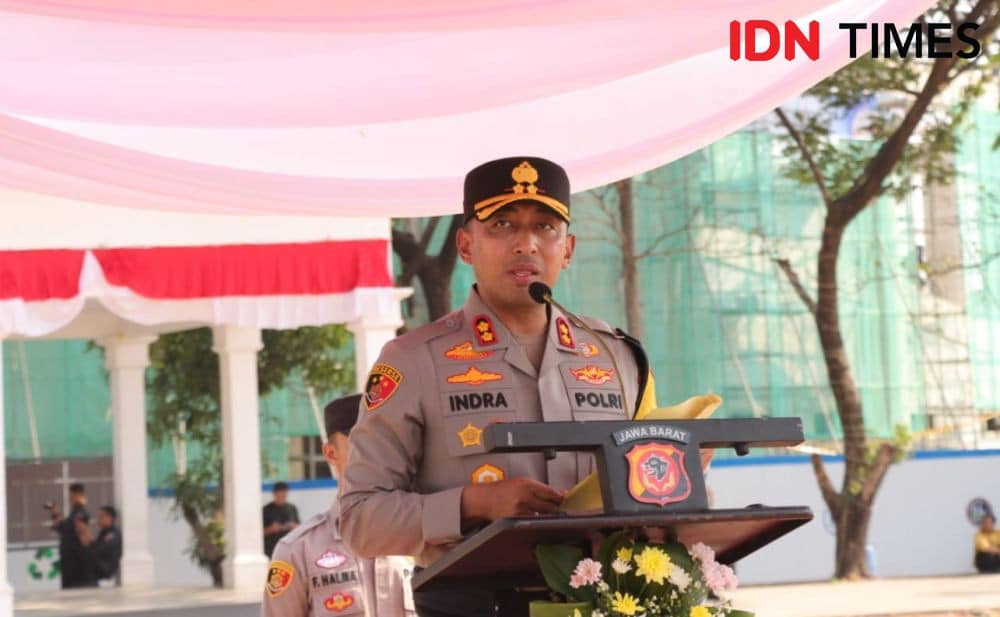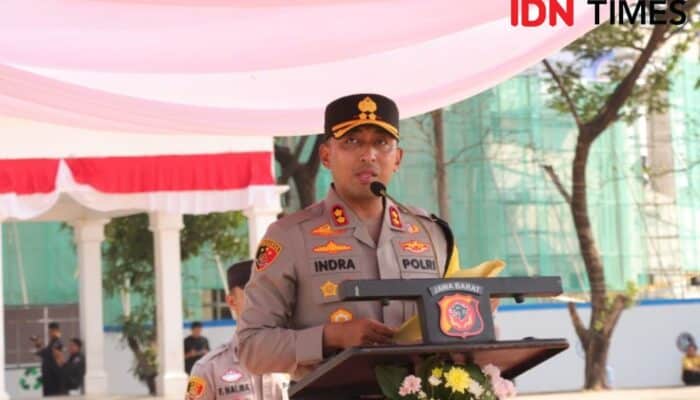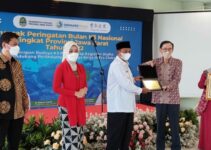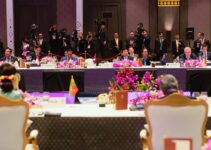Pemilih Potensial Majalengka 2024 presents a fascinating landscape of political and social dynamics. Understanding the diverse demographics, economic realities, and cultural influences shaping this electorate is crucial for anyone seeking to engage with voters in this region. From analyzing historical voting patterns to identifying key issues and emerging trends, a comprehensive understanding of Majalengka’s electorate can provide valuable insights for political strategists, policymakers, and community leaders alike.
Mark your calendars for all the movie premieres coming to theaters this October! Get excited for the October 2024 Movie Release Dates and get ready for a month of cinematic entertainment.
This analysis delves into the heart of Majalengka’s voting population, examining factors such as age, gender, education, income, and religious affiliations. It also explores the economic landscape, highlighting key industries, challenges, and concerns that resonate with voters. By understanding the political landscape, including historical voting patterns, dominant parties, and key figures, we can gain valuable insights into the potential influence of national trends on local elections.
Furthermore, we’ll examine the impact of social and cultural values, media consumption, and voter engagement on the upcoming 2024 elections.
Looking for a great tablet to take on the go? Check out the Best 8 Inch Android Tablet Uk 2024 to find the perfect device for your needs.
Demographic Profile of Majalengka Voters
The demographic makeup of Majalengka voters is crucial for understanding their voting preferences and the political landscape of the region. This section provides a comprehensive analysis of the population’s age groups, gender distribution, education levels, socioeconomic factors, and other key demographic characteristics.
It’s important to know when and where to cast your vote in the upcoming elections. Check out the schedule for the Majalengka simultaneous regional elections in 2024 to find out when the head of the region will be elected in each area.
Age Groups and Gender Distribution, Pemilih Potensial Majalengka 2024
Majalengka’s population is predominantly young, with a significant proportion of voters falling within the 18-35 age group. This demographic trend is reflected in the high number of students and young professionals residing in the region. The gender distribution is relatively balanced, with a slight majority of female voters.
This suggests that both genders play a significant role in shaping the electoral outcomes in Majalengka.
Don’t miss out on the spectacular celestial event this October! If you’re in Texas, make sure you’re prepared with the right equipment to view the solar eclipse. Find out more about solar eclipse glasses and equipment for Texas viewers to ensure you have a safe and unforgettable experience.
Education Levels and Socioeconomic Factors
The education levels among Majalengka voters vary significantly. While a considerable portion of the population has completed high school, the percentage of college graduates is relatively lower. This disparity in education levels often translates into differences in socioeconomic factors. For instance, voters with higher education levels tend to have better access to employment opportunities and higher incomes.
These socioeconomic disparities can influence voting preferences, as voters from different socioeconomic backgrounds may prioritize different issues.
Ethnicities and Religious Affiliations
Majalengka’s population is predominantly Sundanese, reflecting the region’s cultural heritage. The majority of voters are Muslim, with a small percentage adhering to other faiths. This strong religious influence plays a significant role in shaping social and cultural values, which in turn can impact voting decisions.
For example, voters may prioritize candidates who align with their religious beliefs or advocate for policies that support their faith.
Geographical Distribution of Voters
Majalengka is divided into several districts, each with its unique demographic characteristics and voting patterns. The urban areas tend to have a higher concentration of voters with higher education levels and income, while rural areas may have a larger proportion of agricultural workers and voters with lower socioeconomic status.
Get the most out of your Android device! Learn how to Android Get Google Advertising Id 2024 and unlock a world of possibilities.
Understanding the geographical distribution of voters is crucial for campaign strategists, as it allows them to tailor their messages and outreach efforts to specific areas and demographic groups.
Economic Landscape and Key Issues
The economic landscape of Majalengka plays a crucial role in shaping the concerns and priorities of its voters. This section delves into the major industries and economic activities in the region, highlighting the key economic challenges faced by residents and the issues that resonate most with Majalengka voters.
Save big on furniture and home decor this October with Black Friday deals! Check out Black Friday Discounts on Furniture and Home Decor in October and give your home a stylish makeover.
Major Industries and Economic Activities
Majalengka’s economy is primarily driven by agriculture, particularly rice cultivation and livestock farming. The region also has a growing manufacturing sector, with industries such as textiles, furniture, and food processing gaining prominence. Tourism is another significant economic activity, with the presence of several historical and cultural attractions attracting visitors from across the country.
The lunar eclipse is a breathtaking sight, and you don’t want to miss it! Learn what is the best way to watch the lunar eclipse in October 2024 to make sure you have the perfect viewing experience.
Economic Challenges and Key Issues
Despite its economic diversity, Majalengka faces several challenges, including:
- Unemployment:The lack of job opportunities, particularly in urban areas, has led to high unemployment rates among young graduates and skilled workers.
- Poverty:Despite government initiatives, poverty remains a significant issue, particularly in rural areas where many residents rely on agriculture for their livelihood.
- Income Inequality:The gap between the rich and the poor continues to widen, creating social and economic disparities that influence voting preferences.
Issues Resonating with Voters
The economic challenges faced by Majalengka residents have resulted in several issues resonating with voters, including:
- Infrastructure Development:Voters prioritize improved infrastructure, such as better roads, transportation systems, and internet connectivity, to facilitate economic growth and job creation.
- Job Creation:The lack of employment opportunities is a major concern, with voters demanding policies that promote job creation and economic diversification.
- Access to Healthcare:Voters prioritize access to affordable and quality healthcare services, particularly in rural areas where healthcare facilities are often limited.
Political Landscape and Party Affiliations
The political landscape of Majalengka is characterized by a complex interplay of historical voting patterns, dominant political parties, and the influence of key political figures. This section analyzes the political landscape, identifying the key players and platforms that are likely to attract voters in the upcoming elections.
Want to know which areas in Majalengka will be holding simultaneous regional elections? Check out the list of areas in Majalengka that will be holding simultaneous regional elections in 2024 to stay informed.
Historical Voting Patterns and Dominant Parties
Majalengka has a history of supporting various political parties, with no single party consistently dominating the electoral scene. In recent elections, voters have shown a preference for parties that promote development, economic growth, and social welfare. However, the specific preferences and voting patterns can vary across different districts and demographic groups.
This suggests that the political landscape is dynamic and subject to shifts in voter sentiment.
Key Political Figures and Platforms

The upcoming elections in Majalengka are likely to feature several key political figures vying for voter support. These figures represent various political parties and platforms, each appealing to specific segments of the electorate. For example, some candidates may focus on issues related to economic development and job creation, while others may prioritize social welfare and healthcare.
Impact of National Political Trends
National political trends can significantly influence local elections in Majalengka. For example, the popularity of certain national political figures or the prominence of specific issues at the national level can impact voter preferences at the local level. Campaign strategists need to carefully consider the impact of national political trends and tailor their messages accordingly to resonate with voters in Majalengka.
Social and Cultural Influences
Social and cultural values play a significant role in shaping voter preferences and influencing campaign strategies. This section explores the prevailing social and cultural values in Majalengka, highlighting the specific social issues that might impact voting decisions and how cultural factors can influence voter preferences.
Planning your Thanksgiving trip? Don’t miss out on the best deals! Check out Best Thanksgiving 2024 travel deals to find the perfect flight and accommodation for your holiday getaway.
Prevailing Social and Cultural Values
Majalengka is known for its strong sense of community, traditional values, and religious beliefs. The region is deeply rooted in Sundanese culture, with traditions, customs, and beliefs that have been passed down through generations. These values often influence voters’ perspectives on social issues, such as education, healthcare, and environmental concerns.
Social Issues Influencing Voting Decisions
Several social issues are likely to influence voting decisions in Majalengka, including:
- Education:Voters prioritize quality education for their children, seeking candidates who advocate for improved education systems and increased access to educational opportunities.
- Healthcare:Access to affordable and quality healthcare is a major concern, particularly in rural areas where healthcare facilities are limited. Voters may favor candidates who prioritize healthcare reform and improved access to healthcare services.
- Environmental Concerns:Environmental issues, such as deforestation, pollution, and climate change, are becoming increasingly important to voters. Candidates who promote sustainable practices and environmental protection are likely to attract voters who are concerned about these issues.
Cultural Factors Impacting Voter Preferences
Cultural factors can significantly influence voter preferences and campaign strategies. For example, candidates may need to tailor their messages and campaign strategies to reflect the cultural values and traditions of the region. Understanding the cultural nuances and sensitivities of Majalengka voters is crucial for effective campaigning.
The latest celebrity news is buzzing! Find out about Jason Momoa new girlfriend rumors October 2024 and get the scoop on the hottest celebrity gossip.
Media Consumption and Information Sources
The way voters access information and the influence of media coverage play a crucial role in shaping their perceptions and opinions. This section examines the primary sources of information for Majalengka voters, including traditional media, social media, and online platforms.
Stay up-to-date on the latest developments in the world of cricket! Check out World Cup Cricket 2024 Predictions and Odds to see who the experts think will win the tournament.
It also analyzes the influence of media narratives on voter perceptions and identifies potential biases or misinformation circulating among voters.
Primary Sources of Information
Majalengka voters access information through a variety of sources, including:
- Traditional Media:Television, radio, and newspapers remain important sources of information, particularly for older voters.
- Social Media:Facebook, Instagram, and WhatsApp are increasingly popular among younger voters, providing a platform for news, information, and political discussions.
- Online Platforms:Websites, blogs, and online news portals offer a diverse range of information and perspectives, catering to a wide audience.
Influence of Media Coverage and Online Narratives
Media coverage and online narratives can significantly influence voter perceptions and opinions. Candidates and political parties often utilize media platforms to disseminate their messages, build support, and shape public opinion. However, the proliferation of online information also raises concerns about the spread of misinformation and fake news.
October is shaping up to be a great month for superhero movie fans! Get ready for some epic action with the October 2024 Superhero Movie Releases , featuring your favorite heroes and villains.
Voters need to be critical consumers of information, verifying sources and critically evaluating the content they encounter online.
Potential Biases and Misinformation
The spread of misinformation and fake news can distort voter perceptions and influence their decisions. It is crucial for voters to be aware of potential biases and misinformation circulating online and to rely on credible sources of information. Additionally, media outlets and social media platforms need to take steps to combat the spread of misinformation and promote accurate and unbiased reporting.
Get ready for a spooky season with all the thrills and chills of Halloween! Check out Halloween October 2024 for all the latest news on costumes, decorations, and events.
Voter Engagement and Participation: Pemilih Potensial Majalengka 2024
Voter engagement and participation are crucial for a healthy democracy. This section analyzes the level of voter engagement and participation in previous elections in Majalengka, identifying factors that might influence voter turnout in the upcoming elections and potential barriers to voter participation.
It also suggests strategies to improve voter turnout and encourage greater participation.
Don’t forget to turn your clocks back! Find out what time does daylight saving time end in October 2024 to avoid getting caught off guard.
Voter Engagement and Participation in Previous Elections
Voter turnout in previous elections in Majalengka has varied, with factors such as political awareness, campaign strategies, and accessibility to polling stations influencing participation levels. While there has been a general trend of increased voter engagement in recent years, there is still room for improvement in encouraging greater participation and ensuring that all eligible voters have the opportunity to exercise their right to vote.
Factors Influencing Voter Turnout
Several factors can influence voter turnout in the upcoming elections, including:
- Political Awareness:The level of political awareness among voters can impact their decision to participate in the elections. Campaigns that effectively educate voters about the candidates, their platforms, and the importance of voting can encourage greater participation.
- Campaign Strategies:Engaging and effective campaign strategies can mobilize voters and encourage them to participate in the elections. Candidates and parties need to tailor their messages and outreach efforts to resonate with voters and address their concerns.
- Accessibility to Polling Stations:Ensuring easy access to polling stations is crucial for maximizing voter turnout. This includes providing transportation options, extending voting hours, and offering accessible polling locations for voters with disabilities.
Barriers to Voter Participation
Several barriers can hinder voter participation, including:
- Lack of Awareness:Some voters may be unaware of their voting rights or the process of registering to vote. Educational campaigns and outreach programs can address this issue.
- Limited Access to Information:Voters may lack access to accurate and unbiased information about the candidates and their platforms. Providing accessible and informative resources can help overcome this barrier.
- Transportation Challenges:Some voters may face difficulties in accessing polling stations due to transportation challenges. Providing transportation options or extending voting hours can address this issue.
Strategies to Improve Voter Turnout
To improve voter turnout and encourage greater participation, several strategies can be implemented, including:
- Voter Education Campaigns:Educating voters about their rights, the importance of voting, and the process of registering to vote can significantly increase participation.
- Engaging Campaign Strategies:Campaigns that effectively communicate with voters, address their concerns, and provide clear and concise information about the candidates and their platforms can encourage greater engagement and participation.
- Improved Accessibility:Ensuring easy access to polling stations, providing transportation options, extending voting hours, and offering accessible polling locations for voters with disabilities can significantly improve voter turnout.
Emerging Trends and Predictions
The political landscape is constantly evolving, with emerging trends and shifts in voter demographics, political preferences, and social attitudes influencing the outcome of elections. This section identifies emerging trends in Majalengka, discusses their potential impact on the upcoming elections, and shares predictions about the key factors that will likely influence the outcome.
Emerging Trends in Voter Demographics and Preferences
Several emerging trends are shaping the political landscape in Majalengka, including:
- Growing Youth Population:The increasing proportion of young voters is likely to influence political discourse and campaign strategies, as candidates seek to engage with this demographic and address their concerns.
- Rise of Social Media:The increasing reliance on social media for news and information is changing the way voters engage with political campaigns and access information. Candidates need to adapt their strategies to leverage social media platforms effectively.
- Shifting Social Values:Changes in social values, particularly regarding issues such as gender equality, environmental protection, and social justice, are influencing voter preferences and shaping the political landscape.
Impact of Emerging Trends on the 2024 Elections
The emerging trends discussed above are likely to have a significant impact on the 2024 elections in Majalengka. For example, candidates will need to tailor their messages and campaign strategies to resonate with younger voters, who are increasingly active on social media and prioritize issues such as climate change and social justice.
Predictions about Key Factors Influencing the Outcome
Several key factors are likely to influence the outcome of the 2024 elections in Majalengka, including:
- Economic Performance:The state of the economy, particularly in terms of job creation and income inequality, will likely play a significant role in shaping voter preferences and influencing the outcome of the elections.
- Social Issues:Issues such as education, healthcare, and environmental protection are becoming increasingly important to voters, and candidates who address these concerns effectively are likely to gain support.
- Campaign Strategies:Effective campaign strategies that engage voters, communicate clear messages, and address their concerns will be crucial for success in the elections.
Final Summary
In conclusion, the analysis of Pemilih Potensial Majalengka 2024 offers a nuanced understanding of the electorate’s complex makeup. By understanding the demographic profile, economic landscape, political dynamics, social and cultural influences, media consumption patterns, and voter engagement, we can gain valuable insights into the factors that will likely shape the 2024 elections.
These insights can be leveraged by political parties, candidates, and community leaders to tailor their strategies and effectively connect with voters in this crucial region.
FAQ Insights
What are the major industries in Majalengka?
Mjalengka’s economy is primarily driven by agriculture, followed by industries like textiles, food processing, and tourism. The region is also known for its production of rice, sugarcane, and coffee.
What are the main social and cultural issues that might influence voting decisions?
Education, healthcare, and environmental concerns are prominent social issues in Majalengka. Voters are likely to prioritize candidates who address these concerns and offer solutions.
How can I get involved in the political process in Majalengka?
You can participate in the political process by registering to vote, volunteering for campaigns, attending political rallies, and engaging in informed discussions with candidates and fellow citizens.









